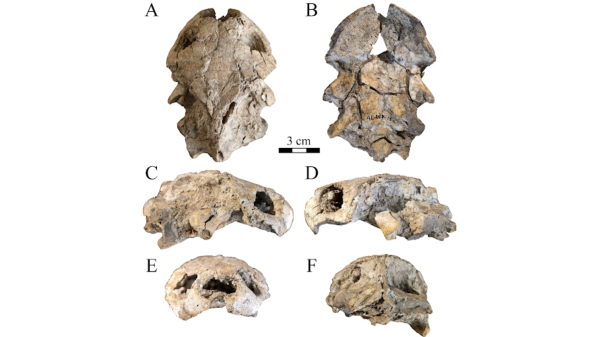Extreme HGTV: Students to learn how to design habitats for living, working in space
The moon photographed by the Lunar Reconnaissance Orbiter Camera team at ASU. The university is offering a new master’s degree in space architecture and extreme environments this fall. Photo by NASA/GSFC/Arizona State University
Architecture students at Arizona State University already learn how to design spaces for many kinds of environments, and now they can tackle one of the biggest habitat challenges — space architecture.
The Design School, in the Herberger Institute for Design and the Arts, is offering a new master’s degree in space architecture and extreme environments this fall.
The transdisciplinary degree will combine architecture, engineering, industrial design, interior design and other disciplines, such as psychology and sociology, according to Elena Rocchi, clinical associate professor of architecture and co-director of master’s programs in The Design School.
“I started to develop an interest in space architecture a few years ago because I realized it was an emerging field and a new economic frontier for architecture,” said Rocchi, who is part of the Interplanetary Initiative at ASU, where she leads the Lessons from the Past Project.
“The program is structured between the bigger scale of architecture to the smaller scale of industrial design.”
ASU will be one of very few institutions in the world offering a degree on how to design habitats to live and work in space.
“There are accredited master’s of space architecture programs but the difference with our program is that it has a direct pathway to all the other colleges and schools, which is something no other program has,” Rocchi said.
Required courses include Prototyping the Future, Human Factors Systems and a final project, with students choosing electives according to their interests — with access to courses in engineering, business, psychology, sustainability and the School for the Future of Innovation in Society.
Professors in the program will include two prominent space architects: Gui Trotti, who has worked on designs for the International Space Station and the South Pole Station, and Daniel Inocente, who has designed for Blue Origin and the European Space Agency. Both are professors of practice in The Design School.
Space architecture must envision the future, and the Prototyping the Future course gives students tools to do that, according to Kristy Kang, associate professor of urban media art and design in the School of Arts, Media and Engineering and The Design School, who has taught the course.
One way to visualize the future is to focus on something specific, and Kang had the class design projects about Phoenix and how transportation, energy, sustainability, food and habitats would look decades from now.
“We wanted to emphasize that the future is already here in some ways,” said Kang, who organized a class trip to visit Biosphere 2, built near Tucson in the 1980s as an experimental habitat that could potentially support life in space. It’s now a museum.
“It’s somewhat of a failed experiment but I thought it was important for them to see the kind of initiatives and projects that have already happened on a large scale to envision the future.”
Kang also taught the students how to use augmented reality, and among the future-set project her students created were narratives about a teenager at the border, a disabled person and a future without bees.
“AR is just one of the emerging technologies that is a little more accessible for students to get hands-on experience envisioning a prototype,” she said.
More Science and technology

New research by ASU paleoanthropologists: 2 ancient human ancestors were neighbors
In 2009, scientists found eight bones from the foot of an ancient human ancestor within layers of million-year-old sediment in the Afar Rift in Ethiopia. The team, led by Arizona State University…

When facts aren’t enough
In the age of viral headlines and endless scrolling, misinformation travels faster than the truth. Even careful readers can be swayed by stories that sound factual but twist logic in subtle ways that…

Scientists discover new turtle that lived alongside 'Lucy' species
Shell pieces and a rare skull of a 3-million-year-old freshwater turtle are providing scientists at Arizona State University with new insight into what the environment was like when Australopithecus…